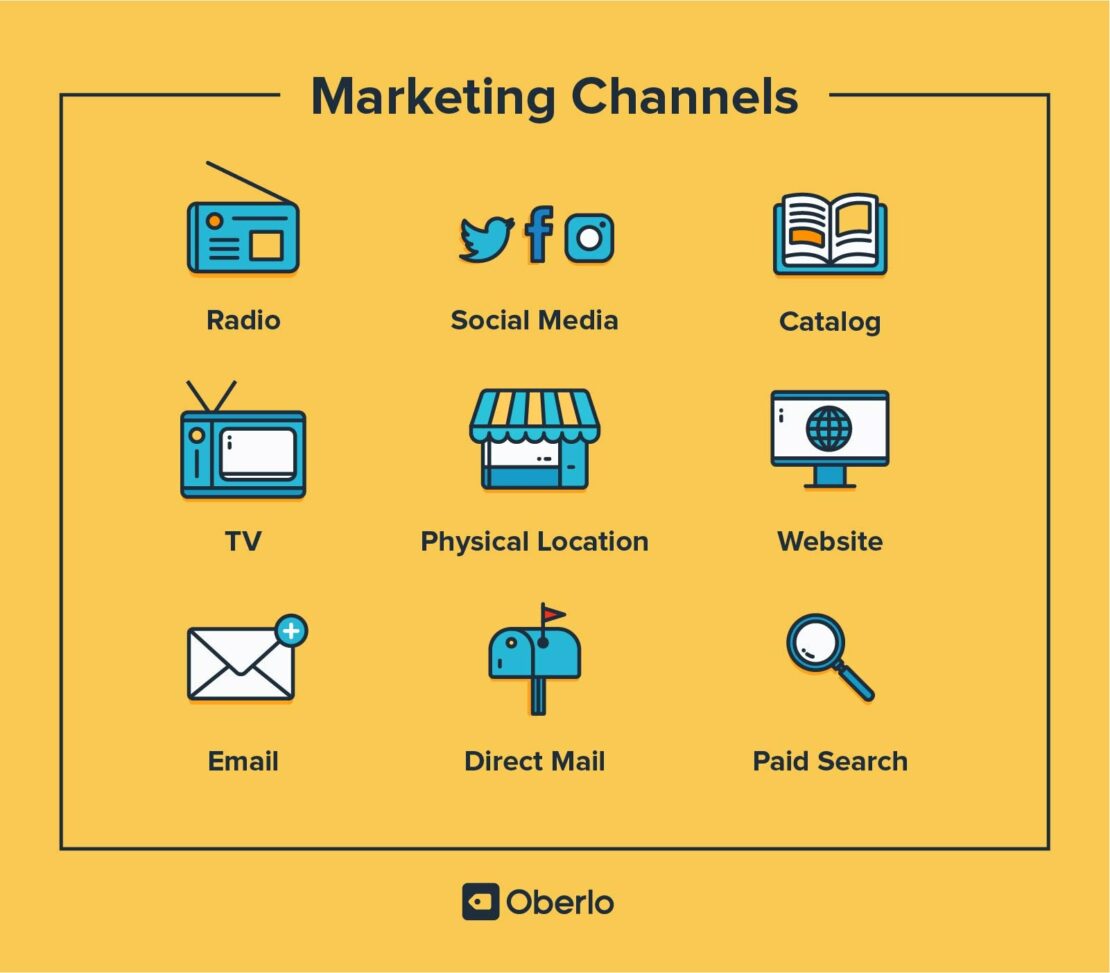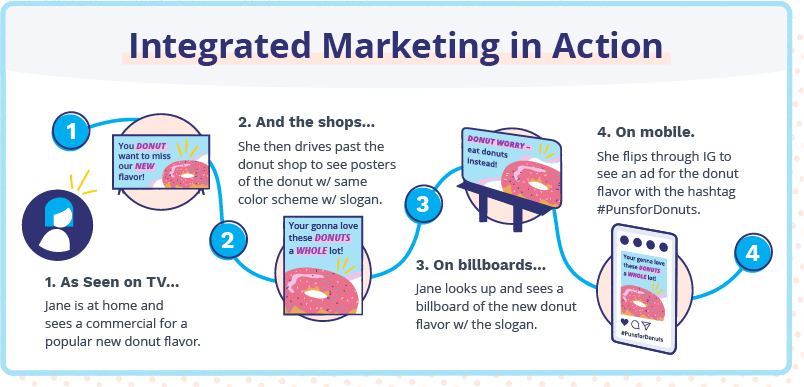BLOG
Why Integrated Marketing is the Future
Published: Nov 4, 2022
The environment faced by marketers competing in the digital marketing industry is complex, competitive and filled with moving parts.
Integrated marketing, which combines traditional marketing elements with digital marketing tactics, is the approach experts say is best suited to address today’s challenges.
In this blog, we’ll discuss why integrated marketing is the best solution to the hurdles faced by modern marketers.
What is integrated marketing?
Integrated marketing is a comprehensive approach that addresses each step of the customer journey through a unified strategy across channels.
It has been proven to drive better results than traditional marketing because it allows you to create a single message across all channels that resonates with your audience, rather than sending out messages that are only optimized for one channel or another.
When companies use integrated marketing, they can see higher conversion rates across their entire funnel by creating personalized and relevant experiences for every customer interaction. They can also reduce costs by limiting the number of touches needed to deliver a message and increasing efficiency through automation processes such as digital advertising and email campaigns.
Integrated marketing is a holistic approach to communications that combines all aspects of an organization’s brand touchpoints into one cohesive strategy. It combines traditional tactics such as out-of-home advertising, public relations, and social media, along with more modern approaches like search engine optimization (SEO) and content marketing.
This is not to say that traditional marketing and physical advertising don’t have their value – bold, unique packaging and thoughtfully crafted labels and signage can have a profound impact and reinforce brand awareness. But they’re not the whole story; today’s marketers have to integrate these meaningful elements with digital ones as people’s physical and digital lives become more integrated.
The concept of integrated marketing originated in the early 1900s when industrial companies started using direct mail campaigns alongside their traditional sales efforts. As technology developed over time, so did integrated marketing practices; today, we see it used by every industry imaginable, from retail clothing stores to professional sports teams to financial services firms – it’s become ubiquitous because it works.
So why does integrated marketing work so well? Because it helps companies reach their target audiences through multiple channels at once, resulting in higher ROI than any other approach available today.
Why using integrated marketing matters
But why? What’s the point of integrating your marketing efforts if you’re a small business and don’t have the budget for it? And how do you even begin to start integrating your efforts if you’re already working with multiple vendors?
We’ll break down why integrated marketing matters, what data integration means for marketers, and provide some tips on making sure your data is all in one place.

Why integrated marketing is the future
Integrated marketing is part of a larger trend toward managing a brand’s reputation rather than just selling products or services. It’s a shift in focus from one-off campaigns to an ongoing relationship with customers that builds long-term value.
This strategy is viewed as the future of marketing because it enables you to combine your efforts across channels and touchpoints in order to achieve a greater ROI than any other method. It’s also more effective because it allows you to reach your audience at the right time and place for them, which helps you create more personal and organic interactions between your brand and your customers — and that means better customer experiences that lead to higher loyalty rates over time.
There are a lot of buzzwords that float around in marketing, but integrated marketing is more than that – it’s a way of doing business. By combining all the different aspects of marketing – from sales and advertising to social media and digital – you can create an experience for your customer that will make them feel valued and appreciated.
Integrated marketing is important because it helps you get closer to your customers. In many ways, this makes you more like your customer: when you understand their needs better than anyone else does, you can serve them better and give them what they want.
If you’re going to optimize your marketing strategy through integration, you must use all available channels to reach your target audience. You’ll use social media, email marketing, search engine optimization (SEO), content marketing, and more – all at once.
This is important because it’s not an either/or situation: either you use a channel, or you don’t. Instead, the most effective way to reach your customers is by using multiple channels at once, and it will lead to better results.

Integrated marketing means having a holistic view of what your customers want and how they engage with different types of content. You can’t just focus on one channel. Instead, you have to consider how each piece of content interacts with others so that it provides a cohesive experience throughout the customer journey.
What data integration means for marketing
Data integration is the process by which different data types are combined into one cohesive whole. It’s similar to the concept of data aggregation – but while aggregation is usually focused on a single type of data (for example, web analytics), integration can combine any type of data that are relevant to your business: sales and customer service records, product information and inventory levels, emails and social media posts, etc.
According to Gartner, “Data integration tools enable organizations to access, integrate, transform, process and move data spanning various endpoints and across any infrastructure to support their data integration use cases. The market for data integration tools includes vendors that offer a stand-alone software product (or products) to enable the construction and implementation of data access and data delivery infrastructure for a variety of data integration use cases.”
Many tools are available to businesses to incorporate data integration, so you’ll need to do your research to find one that best suits your needs. Many of the existing data integration tools come from well-established names like Microsoft, IBM, and Amazon Web Services. The tool you choose will depend on your goals, which means you will be looking at options like:
- Data pipelines: tools that gather all the data you want in one place
- Data management platforms: tools that gather data and store and organize it for analysis
- Data visualization tools: entaging tools that allow you to see trends and quantify what’s happening with your business
- Data transformation tools: tools that help you filter and edit data for further analysis
Data integration means that all aspects of your business are working together to improve your customer’s experience with your brand. Importantly, it also means that everyone on your team has access to the same information at any given time, so they can work together seamlessly and efficiently towards their goals of delivering value to customers through every aspect of their interaction with your company or brand.
However, data integration is more than just merging different sources of information together into one place; it’s also about making sure those sources are accurate and up-to-date so you can make more informed decisions about how you want your marketing team to behave on social media channels like Facebook or Twitter.
Why is data integration so important for marketers?
Data integration is a vital part of an integrated marketing strategy because it allows you to combine your data into a centralized hub. From this hub, you can analyze your data, draw conclusions and make decisions.
If you’re looking for ways to improve your marketing strategy or increase sales opportunities within your company, then there’s no better place to start than by integrating all those disparate sources of information into one place.
For example, let’s say you have a customer database with information about your customers’ interests, previous purchases, and demographics. You could use this data in conjunction with data from social media platforms like Facebook and Twitter to create different sets of customer profiles. You could then create targeted ads and content for each customer type so that your marketing messaging aligns with each customer’s specific interests.
The importance of data integration in an integrated marketing strategy cannot be overstated: without it, companies would be unable to take full advantage of their existing data — and therefore unable to deliver the most relevant content and offers across all channels.
Data integration is the way to go – so where do you start?
The process of data integration begins when you combine data from multiple sources into a single source. It can be used for analyzing, reporting, and sharing information between different systems and applications. Data integration is also known as ETL (extract, transform, load) or ELT (extract, load, transform).
You need to integrate your data to ensure you achieve your marketing goals. If you don’t integrate your data and run the same campaigns to all of your customers, don’t be surprised when you find yourself battling low engagement. Instead of funneling all of your customers to the same place, tailor each experience according to individual purchase behaviors and product preferences.
You need to integrate data to analyze and report on your campaign performance. You might want to look at how many clicks each campaign received and what kind of engagement they generated, or maybe you just want an overview of how many people have viewed each piece of content within the last month. This would tell you whether people are engaging with your content at all.
Data integration: Is it complicated?
The answer depends on how far you want to go. If you’re just looking to make sure your website is up-to-date and relevant, then it’s pretty simple. But if you want to use data for more than that, things can get pretty tricky.
There are so many different types of data, from customer information to customer behavior, that all need to be integrated in order for a marketer to see the big picture. You can’t just integrate one type of data or another type of customer information; you have to integrate them all.
And that’s where things get complicated – but also really exciting. The possibilities are endless when it comes down to what kind of information can be used by marketers today.
The outlook for integrated marketing
There’s no question that integrated marketing is the way of the future. The world we live in is increasingly becoming an integration of our online and real lives, so marketers need to be sensitive to this reality and understand how to integrate their own strategies to engage effectively with their audience.
Data integration helps marketers map data, find patterns, and predict customer behavior. Marketers need to integrate all types of information for a deep understanding of their customers to drive more sales.
While it may seem complicated, there are more and more tools available for businesses to take advantage of this powerful technology.
Integrated marketing FAQs
By adopting an integrated strategy, marketers can streamline their efforts and create consistent messaging across multiple channels. They can then use data integration to spend more time and energy on creating personalized messaging for their customers, rather than trying to manage disjointed pathways to reach a wide range of customers with differing needs and expectations.
The main goal of integrated marketing is to create a unified experience for customers across all channels. This approach enhances brand awareness and builds trust and recognition among your customers. When your customers experience a consistent message across platforms, you can expect greater brand loyalty and more repeat business.
By combining traditional and digital marketing strategies with data integration, marketers can reach a bigger audience with personalized and more impactful multichannel experiences.
